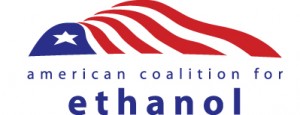In an EPA press conference this morning, Assistant Administrator for Air and Radiation Gina McCarthy announced that an E15 Waiver, originally requested by POET and championed by Growth Energy along with other industry allies, was now approved for model year 2007 and newer vehicles and light duty trucks. E15 is not, however, approved for use by other types of vehicles nor small engines or marine equipment, said McCarthy, as they are still waiting for additional DOE test results. The EPA expects to receive the next phase of results on cars and light duty trucks for model years 2001-2006 this November.
“While the EPA has no authority to mandate the use of E15, there is no question that today’s decision has the potential to increase the use of renewable fuels in the future,” said McCarthy.
 Ethanol groups were quick to react to the announcement and Brian Jennings, Executive Vice President of the American Coalition for Ethanol (ACE) said in a press statement, “While some will portray this partial E15 waiver as a major victory and others will suggest it is completely unworkable, the truth lies somewhere in between. ACE views it as a very small first step and we will work to try and make the best of it. While we are pleased EPA finally made a decision, restricting the use of E15 to 2007 model year and newer vehicles is inadequate and will not sufficiently move the demand needle for ethanol.”
Ethanol groups were quick to react to the announcement and Brian Jennings, Executive Vice President of the American Coalition for Ethanol (ACE) said in a press statement, “While some will portray this partial E15 waiver as a major victory and others will suggest it is completely unworkable, the truth lies somewhere in between. ACE views it as a very small first step and we will work to try and make the best of it. While we are pleased EPA finally made a decision, restricting the use of E15 to 2007 model year and newer vehicles is inadequate and will not sufficiently move the demand needle for ethanol.”
 The National Corn Growers Association also responded to the news with a statement. “We’re disappointed in the very limited scope of this approval, but pleased the EPA has finally taken action to partially approve the waiver request to allow higher blends of ethanol in some motor vehicles,” said NCGA President Bart Schott, a grower in Kulm, N.D. “We believe this bifurcation of the approval process, and the labels that are expected to be placed on higher-blend fuel pumps, can lead to general consumer confusion and therefore act counter to the original intent.”
The National Corn Growers Association also responded to the news with a statement. “We’re disappointed in the very limited scope of this approval, but pleased the EPA has finally taken action to partially approve the waiver request to allow higher blends of ethanol in some motor vehicles,” said NCGA President Bart Schott, a grower in Kulm, N.D. “We believe this bifurcation of the approval process, and the labels that are expected to be placed on higher-blend fuel pumps, can lead to general consumer confusion and therefore act counter to the original intent.”
 The Brazilian Sugarcane Industry Association (UNICA) has been watching the move to E15 very closely and North American Chief Representative Joel Velasco commented, “Many U.S. ethanol groups have argued recently that after 30 years of tax credits and trade protection they are ready to compete without subsidies provided the government grants them greater access to America’s fuel pumps. With the EPA’s decision to increase ethanol limits by 50% for newer vehicles, that day has arrived.”
The Brazilian Sugarcane Industry Association (UNICA) has been watching the move to E15 very closely and North American Chief Representative Joel Velasco commented, “Many U.S. ethanol groups have argued recently that after 30 years of tax credits and trade protection they are ready to compete without subsidies provided the government grants them greater access to America’s fuel pumps. With the EPA’s decision to increase ethanol limits by 50% for newer vehicles, that day has arrived.”
With today’s decision, nearly 18 percent of the 239 million cars on the road now have the option to use E15. Should model years 2001-2006 be approved later this year, then the amount of vehicles eligible to use E15 will increase to 54 percent.

